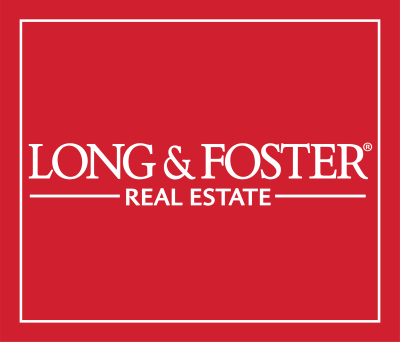If it’s your first time buying a home, you’re may be a little overwhelmed by all of the loan options that are available. One popular type of loan is an FHA loan, which means it is mortgaged by an FHA-approved lender and insured by the Federal Housing Administration (FHA). These types of loans require a lower down payment and credit scores compared to many other options.

Specifically, as of 2019, you can borrow up to 96.5% of the value of home, with a credit score of at least 580. Not quite there on credit? If you’re between 500-579, an FHA loan can still happen with a down payment of 10%. These factors make them a strong option for many low to middle income buyers.
How does an FHA loan work?
FHA loans require two kinds of mortgage insurance premiums: an Upfront Mortgage Insurance Premium (UFMIP) and an Annual MIP (charged monthly). As of this writing, the current Upfront MIP is 1.75% of the loan amount, paid at the time of closing or rolled into the loan. These payments end up in an escrow account set up by the US Treasury Departments and are used to make mortgage payments in the case of default.
Even though it’s called an Annual MIP, you can expect to make payments every month. These payments can be from .45%-1.05% of the loan amount, depending on a number of factors such as the size of the loan, its terms, and the loan-to-value ratio (LTV). This payment is made in addition to the cost of UFMIP and will continue for either 11 years or the life of the loan.
FHA lenders also can’t charge more than 3-5% of the loan in closing costs. It also allows home sellers, builders, and lendes to pay up to 6% of the borrower’s closing costs. Cool!
Where did FHA loans come from?
FHA loans are a product of the Great Depression. At this time, the housing market was in serious trouble and home ownership was hovering around 40%, partially due to the fact that loans were only available for 50% of a property’s value! To help overcome this challenge, the government implemented a federally-insured loan program to help reduce lender risk and improve the odds that borrowers could qualify for home loans.

How do I qualify for an FHA loan?
Aside from having a certain credit score and the cash necessary for the down payment, borrowers must also meet the following criteria:
- Verifiable employment for the previous two years (be it self-employment or with a company)
- The loan is to be used for a primary residence
- Your front-end debt ratio (monthly mortgage payments), shouldn’t exceed 31% of your gross monthly income – but up to 40% may be permissible
- Your back-end debt ratio (mortgage, plus all monthly debt payments) should not exceed 43% of your gross monthly income – but up to 50% may be permissible
- If you’ve gone bankrupt, you must wait 12 months to two years to apply, and three years for a foreclosure.
(Are you a millenial considering your first home? Check out my extra tips just for you.)
FHA vs conventional loans
Depending on your specific needs, an FHA loan may or may not be the right option for you. For those who are interested in high value homes and have substantial income and credit available, an FHA loan is not the right answer.
Here’s a comparison:
| FHA LOAN | CONVENTIONAL LOAN | |
| MINIMUM CREDIT SCORE | 500 | 620 |
| DOWN PAYMENT | 3.5% with credit score of 580+ or 10% for credit score of 500 to 579 | 3-20% |
| LOAN TERMS | 15 or 30 years | 10, 15, 20, 30 years |
| MORTGAGE INSURANCE | Upfront MIP + Annual MIP for 11 years or lifetime of the loan | None with 20%+ down payment |
| MORTGAGE INSURANCE PREMIUMS | Upfront: 1.75% of the loan Annual: 0.45% to 1.05% | PMI: 0.5% to 1% of loan amount annually |
| DOWN PAYMENT GIFTS | 100% of down payment can be a gift | Part can be a gift |
| DOWN PAYMENT ASSISTANCE PROGRAMS | Yes | No |
It’s clear that there are benefits and drawbacks to each loans, with the biggest benefit of a conventional loan often being that it costs less over the long term. This is because it’s often associated with lower rates and less costs related to insurance.
Types of FHA loans
There are a number of different types of FHA loans available depending on the needs of the borrower. Some common types of FHA loan include:
- FHA 203(k) loans: These loans include some money for renovations within a single mortgage. It can also be used by homeowners to refinance an existing mortgage to add on the cost of remodeling projects.
- Home Equity Conversion Mortgage (HECOM): A reverse mortgage that is insured by the FHA. It allows older homeowners (62 years and above) that have significant equity in their home or own it outright to withdraw a portion of their home’s equity.
- FHA Energy Efficient Mortgage (EEM) Program: These loans allow buyers to get mortgages for homes that are already efficient or to buy older homes and remodel them with ‘green’ updates. In the case of the latter, the costs of the upgrades are included in the loan without increasing the down payment.
- FHA Section 245(a) loan: AKA the Graduated Payment Mortgage. Designed for borrowers who will have increases in income over time. Payments start out smaller but gradually go up at a predetermined percentage at certain times.
Is an FHA loan right for you?
To find out if an FHA loan is the right choice for your home buying journey, it’s important to consider your income, credit, and needs in a home. Knowing these things can help you better assess what’s available on the market against what you need. Finding an experienced loan officer is a great way to get an honest look at your situation and what the best options for it are.
Are you considering buying your first home in DC, MD, VA or WV? I’m experienced with first time home buyers and also with those who may have less than stellar credit. Contact me today for more information at sian@sianpugh.com


Leave a Reply